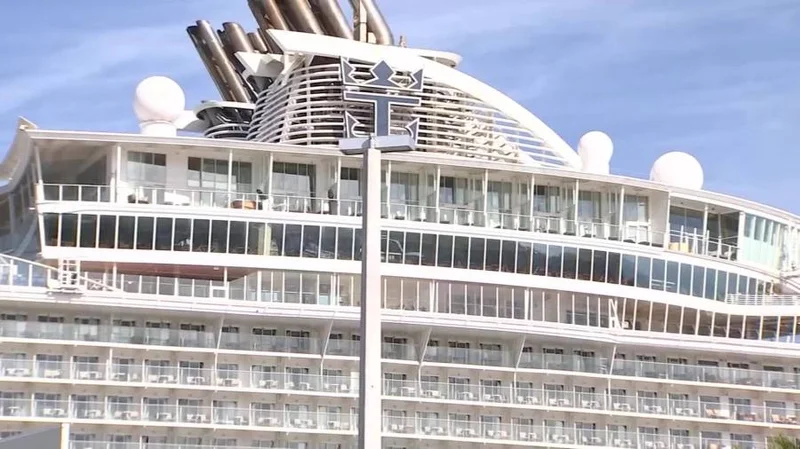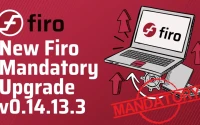I’ve been watching the news about the latest norovirus outbreak on a Royal Caribbean cruise ship, the Serenade of the Seas. The headlines are predictable, of course. They focus on the numbers: 71 passengers, 1 crew member, a vacation disrupted. And while my sympathy is with everyone who fell ill, my mind, as it always does, went somewhere else entirely. I don’t see a simple story of a nasty stomach bug. I see a ghost in the machine. I see a system sending us a signal, and we are still using 20th-century tools to try and decode it.
What we have here is a fascinating case study in system dynamics. You have a closed environment—a magnificent, floating city of nearly 3,000 people—that is also a perfect incubator. When a pathogen like norovirus gets introduced, it’s a biological cascade event. The official response, as reported by Royal Caribbean and monitored by the CDC’s Vessel Sanitation Program, is logical and necessary. They increase cleaning, they isolate the sick, they collect samples. This is the protocol. It’s the public health equivalent of putting up sandbags after the river has already breached its banks.
It’s a reactive model. It has to be. The entire system is built on lagging indicators. A person starts feeling sick. They wait, hoping it passes. It gets worse. They finally report it. The ship’s medical staff logs it. Once the number of reports crosses a certain threshold—in this case, 3% of the population on board—it becomes an official “outbreak.” The report is filed. The response protocols kick in. Do you see how much time has elapsed? The virus has been playing chess while we’ve been setting up the checkerboard.
This reminds me of the early days of firefighting, before alarm systems. The only way you knew a building was on fire was when you saw smoke billowing from the windows, by which point the structure was already compromised. We wouldn't accept that today. We have smoke detectors, heat sensors, automated sprinkler systems. We have systems that detect the precursors to disaster. So why are we still using a "wait-for-the-smoke" model for public health in these technologically advanced, closed ecosystems?
When I first saw the data from this outbreak, laid out next to the one from the Navigator of the Seas back in July, I honestly just sat back in my chair, speechless. Not because of the virus, but because of the opportunity staring us right in the face. This isn't a cruise ship problem; it's a solvable, fascinating, data-flow problem.
From Petri Dish to Predictive Organism
Turning the Ship into a Sensor
Imagine, for a moment, that you’re on this cruise. What if the ship itself had an immune system? A digital one. A nervous system of sensors constantly monitoring the health of the entire population, not as individuals, but as a collective organism.

We’re not talking about dystopian surveillance. We’re talking about smart, anonymized data aggregation. Most of us are already wearing the sensors—the smartwatches and fitness trackers on our wrists. They monitor heart rate, body temperature, sleep patterns. A sudden, correlated spike in resting heart rates or a rise in body temperatures across a statistically significant portion of the ship’s population could be the first whisper of an impending outbreak, hours or even days before the first person ever reports to the infirmary.
And we can go deeper. Every modern cruise ship is a marvel of engineering, especially its water and waste processing systems. This brings us to epidemiological wastewater analysis—in simpler terms, it means testing the ship's sewage in real-time to see what pathogens are circulating among the population, often before they even cause symptoms. This technology is already being used to monitor for polio and COVID-19 in cities. On a closed system like a cruise ship, its predictive power would be off the charts.
This is the paradigm shift. You combine passive biometric monitoring from wearables with real-time wastewater analysis, and suddenly you have a predictive dashboard. You’re no longer waiting for the smoke; you’re detecting the spark. The ship’s crew wouldn't be starting their enhanced sanitation protocols on Day 9 of the cruise after 71 people are already sick; they could be starting them on Day 6, when the algorithm says, "Alert: Unidentified viral RNA detected in Sector 4 wastewater, correlated with a 5% increase in aggregate passenger body temperature." The speed and precision of this is just staggering—it means the gap between a pathogen's arrival and our response to it could shrink from days to mere hours, potentially stopping an outbreak before it ever truly begins.
Of course, with any powerful new system comes responsibility. The ethical considerations are paramount. This data must be completely anonymized, aggregated, and used for one purpose only: the collective health of the vessel. We are not tracking people; we are tracking the pulse of the population. The goal is to build trust, to create a system that makes people feel safer, not more scrutinized.
So when I see a headline that frames these ships as "floating petri dishes," I can’t help but reframe it. These aren't just petri dishes. They are the perfect, contained laboratories for building the future of predictive, automated public health. What we learn to build for a ship of 3,000 people today, we can scale for a city of 3 million people tomorrow. What does that future look like? It looks safer, smarter, and profoundly more prepared. It looks like a world where we finally get ahead of the cascade.
---
The Signal in the Noise
Forget better disinfection protocols. That’s an arms race we can’t win. The real breakthrough isn't in fighting the last outbreak, but in building an intelligent system that sees the next one coming. We have the sensors and the AI to turn these closed environments from reactive vessels into predictive organisms. It’s time to stop just cleaning up the mess and start listening to the signal.
Reference article source:









